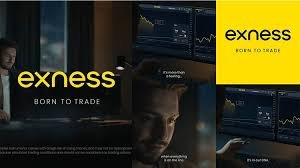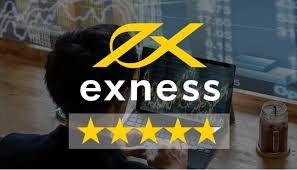Understanding Exness Leverage Change What It Means for Traders

Understanding Exness Leverage Change: What It Means for Traders
In the dynamic world of online trading, brokers frequently adjust their policies and features to align with market conditions and regulatory requirements. One such important aspect is the leverage offered to traders. The recent exness leverage change has sparked significant conversations among traders and investors. This article aims to dive deep into what leverage is, why it is essential, and the ramifications of the changes introduced by exness leverage change Exness trading. We’ll also provide strategies for navigating this new landscape.
What is Leverage in Trading?
Leverage is a practice used by traders to increase their potential returns by borrowing capital. This allows them to control a large position size with a relatively small amount of money. For instance, with a leverage ratio of 1:100, a trader can control a position of $100,000 with just $1,000 in their account. While leverage amplifies potential profits, it equally enhances the risk of losses, making it a double-edged sword for traders.
Importance of Leverage for Traders
Leverage plays a crucial role in trading as it allows traders to gain more exposure to the markets without needing to invest large sums of capital. Here are several reasons why leverage is vital:
- Enhanced Profit Potential: With leverage, even small market movements can result in significant profits.
- Accessibility: Leverage makes trading accessible to a broader audience, as individuals can start with smaller deposits.
- Diversification: Traders can diversify their investments across different assets, enhancing their overall investment strategy.
- Flexible Trading Strategies: Leverage enables traders to adopt various strategies, from day trading to long-term investments.
The Exness Leverage Change: What You Need to Know
The recent changes in Exness’s leverage have been implemented in accordance with evolving regulatory requirements and market dynamics. Understanding the specifics of these changes is essential for all traders:

- Adjusted Leverage Ratios: Exness has altered its leverage offerings across different account types, impacting how much capital traders can control.
- Compliance with Regulations: These adjustments often stem from efforts to comply with local regulations aimed at protecting retail traders from excessive risk.
- Adapting to Market Conditions: As market volatility rises or falls, leverage offerings may be modified to safeguard both the broker and its clients.
Impacts of Leverage Changes on Trading
The implications of leverage changes can vary significantly from trader to trader. Here are some of the most common effects:
- Potentially Lower Profit Margins: With reduced leverage, the potential for large profits diminishes, meaning traders must adjust their strategies.
- Increased Margin Requirements: Higher margin requirements may necessitate larger initial deposits to maintain positions, which can deter some traders.
- Risk Management Considerations: The change in leverage can prompt traders to rethink their risk management strategies and adopt more conservative approaches.
Strategies for Adapting to the Leverage Change
While the exness leverage change may initially seem daunting, adapting to it is entirely feasible with the right strategies in place. Here are some recommendations:
- Reassess Your Trading Plan: Evaluate your existing trading strategies and how the new leverage might affect them. Consider adjusting your position sizes accordingly.
- Implement Robust Risk Management: With altered risk profiles, it is crucial to enhance your risk management practices. Limit your exposure, use stop-loss orders, and diversify your investments.
- Stay Informed: Regularly update yourself on any further changes in leverage policies and market conditions. Continuous education will help you make informed decisions.
- Utilize Demo Accounts: Experiment with the new leverage settings using a demo account before committing real funds. This gives you a chance to test strategies without financial risk.
Conclusion
The exness leverage change is a significant development that requires traders to adapt and evolve. While this change may pose challenges, it also opens doors for a more sustainable trading environment. By understanding leverage’s mechanics, reassessing trading strategies, and implementing robust risk management practices, traders can navigate this transition successfully. As with any change in trading conditions, staying informed and flexible is key to thriving in the dynamic world of online trading.

